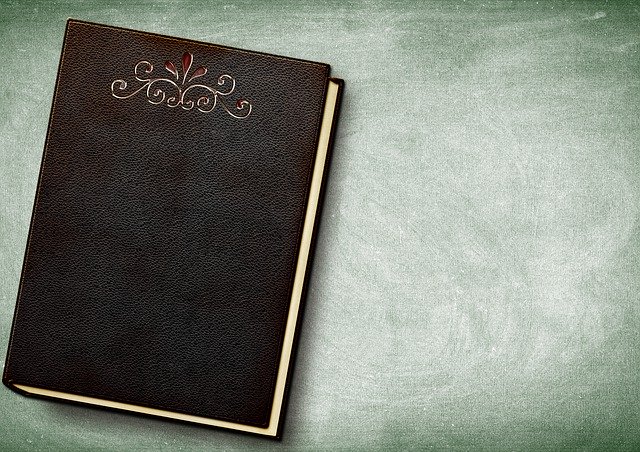A book is a wonderful, powerful artifact that has changed lives and nations. Even before Gutenburg’s invention of the printing press they were powerful things (witness thousands of years of religious text), although only accessible in the halls of the powerful. Since that time, however, the reading, writing, and publishing of books has evolved continuously until, today, the majority of the population of the globe can read and anyone with access to a computer and the internet can publish a book. Throughout that evolution, the structure of the book has become codified so that any book, published anywhere in the world, will have the same basic layout.

When I first had the idea to publish a book — an anthology of short fiction by authors from an online writing site I was part of — it never occurred to me that there was any more to creating a book than simply choosing good content and wrapping it in a cover. How wrong I was. While it’s not rocket science, I continually see new self-publishing authors facing the same learning curve that I did. So, below is a detailed description of the anatomy of a book.
Briefly, a book has four major sections: the front matter, the body, the back matter, and the cover. Each of these has their sub-components, which have varying degrees of importance. Some are crucial and some can be left out entirely.
1. Front Matter
The front matter is the section of the book from the first printed page inside the cover until the first page of the main body of text (usually either a prologue or Chapter 1). The many possible components of a book’s front matter (a general order of appearance is given in the side-bar) are:
Title Page
** Crucial **
The Title Page is one of two must-have pages in the front matter. It is always the first printed page of the book. It includes the book title, series name, author name and publisher name. Sometimes a publisher’s logo, the publication year, and the publication city are also included, although with global publishing the city is more commonly left out now.
Copyright Page
** Crucial **
The Copyright page is the second page that is vital to have in the front matter. This contains the statement of the author’s rights to ownership of the book’s content as well as publisher information. It usually also includes the ISBN (International Standard Book Number), a unique identifier of that book.

Front Matter Components
- Title Page
- Copyright page
- Half-title Page
- Other books by…
- Dedication
- Enticements
- Table of Contents
- Acknowledgements
- Forward
- Introduction
There is often country-specific phrasing for certain statements, so it is best you search the internet for phrasing used in your country and in the genre of the book. The copyright page may also include disclaimers and the names of the cover artist or an illustrator.
Half-Title Page
Optional and growing more so by the day, it is sometimes common to repeat the Title Page but with less information. It was originally related to the sales and return of print books and is completely unnecessary for e-books and most self-published books except for stylistic reasons.
Other Books By...
If the author has other books in the same series, or an extensive backlist, it’s often included early on in the front matter. Sometimes this is added to the back matter instead.
Dedication
This is usually a few sentences or a short phrase dedicating the book to one or a few people who were important to the author or who were inspirational for the creation of the book.
Enticements
A vibrant e-mail list is important for most successful independent authors. One way to encourage readers to sign up for the e-mail list is to offer an enticement. For indie authors with large back lists, this is often a free novel and a graphic enticement (sometimes hypertext-linked in e-books) can be placed in the front or back matter of the novel.
Table of Contents
Table of contents are mandatory for non-fiction books and optional for fiction books. The primary exceptions are e-books, which don’t need a text table of contents, but should always have the digital table of context (referred to as the NCX view – Navigation Control file for Xhtml). This file allows e-book readers to easily navigate between chapters and sections.
Acknowledgements
It’s common to acknowledge people who have been supportive to the author during the creation of the book. These are commonly family, members of writing groups, editors, agents, etc.
Forward
A forward is most common in non-fiction books, although sometimes found in reprints of particularly important fictional works. It’s written by a well-respected writer in the same field as the author.
Introduction
Not the same as a prologue, and introduction is generally used in one of two ways.
A. for the author to introduce the general subject matter of a non-fiction book and explain why they wrote the book.
B. as an introduction to the theme or purpose behind writing an anthology.

2. The Body
The body of the book contains the information that readers care most about, the actually text of the story, facts, or author’s opinion that’s being presented.
The body is broken into Chapters, so separate similar ideas, themes, or story events, and Parts if broader separation is desired (most common for non-fiction, but sometimes used for fiction).
Chapters and Parts
There is often country-specific phrasing for certain statements, so it is best you search the internet for phrasing used in your country and in the genre of the book. The copyright page may also include disclaimers and the names of the cover artist or an illustrator.
Page Numbers
While this may seem obvious, the body is the only section where page numbering is mandatory. If it’s used in the front matter it will be of a different style (commonly Roman numbers), while if used in the back matter it will generally continue in the format of the body.
While page numbers can be place at the left / centre / right of the top or bottom of the page, centre bottom is the most common for fiction while the bottom ouside (near the page edge) can also be common for non-fiction.
Headers & Footers
The space at the top or bottom of the pages are known as the Header or Footer, respectively.
The Header is often left blank in works of fiction, although it’s also not uncommon to see the author’s name on one side and the book title on the other. In short-fiction anthologies this will often be the author name / story title. Headers are most commonly used in non-fiction where they will, again, have either the author’s name or book title on one page and the chapter title on the other.
The Footer most common contains only the page numbers. However, it is also a place where references and notes can be placed if necessary.
3. Back Matter
The back matter is typically the simplest segment of the book. It almost always includes a page about the author. Other than that, common additions will be: a page with the author’s backlist, an excerpt from the next book in the series, and possibly an enticement. Sometimes there’s also a ‘thank you for reading’ page. With e-books, especially on Amazon, the reader will automatically be taken to a review-request page, so there is generally no need to include one.


4. Cover
The cover has the vitally important job of drawing the reader in. It should not just convey information about the contents of the book, but it should do so in a way that fits the reader’s expectations while simultaneously promising something new. And it has to do this while adhering to some important restraints and allowing for important processing information to be included.
In this new publishing age, there are two common types of covers the indie author will most commonly work with:
- Front Cover only (for e-books)
- Wrap-around cover (for print)
If creating a wrap-around cover yourself, be sure to download a cover template of the appropriate size (you’ll need to know the print dimensions and the number of pages). Kindle Direct Publishing has a great template creator, which will create a PDF or photoshop file as required.
For creating an e-book cover, there are many great online tools such as Canva.com.
Title, Author, and Font Selection
The book title and the author name must be included on the front cover. In addition, it’s not uncommon to included a short phrase or tagline.
Font selection, size and colour are all important considerations for the cover text. The text should complement, but still stand out from, the cover image and be easy to read even when the cover is small (as in a thumbnail). Furthermore, text on the front cover should be arranged so it doesn’t interfere with the cover image.
Finally, whether the author name or title is larger will depend on which is likely to be the main selling point.
Trim and Bleed
The trim and bleed are technical terms necessary to understand only if you’re creating your own wrap-around print covers.
Trim is the the thin area around the edge of a print book that will be trimmed off after the printing to smooth the edges and give the final proper size.
The Bleed is the part of the cover image that extends past the ‘safety zone’ to the edge of the cover. Think of it as an area of the cover near the edge that should not include any important cover content as some of it may be trimmed.
If using a template such as that from Amazon’s KDP, the trim and bleed will be obvious as dotted lines around the outer edge. All important cover content needs to be within these lines.
The Spine
The width of a book’s spine, where it folds, will determine if any text is added here. Novellas and bite-sized self-help books have become popular with the rise of self-publishing and print on demand, and they often have a narrow spine that won’t support the addition of any text. Standard-length novels of around 360 pages will have ample space on the spine to include the author’s name, the book title and the publisher’s logo.
Back Blurb
The back blurb is second in importance only to the cover image for drawing the attention of potential readers.
It’s a few paragraphs on the back cover meant as an enticing description of the book. It’s the advertisement or the teaser that should inspire potentially interested readers to take a look inside the cover.
While many authors spend almost no time on this, it’s importance to attracting readers means it’s careful crafting should warrant some attention and time.
The ISBN
The ISBN, or International Standard Book Number, must be included on the back cover of a print book. You can buy your own ISBNs from licensed company (they are generally quite expensive unless bought in bulk), however, most of the self-publishing companies will supply and ISBN for free.
Likewise, while you can add the ISBN to your book cover yourself, companies will automatically add it unless you tell them otherwise.
Summary
Did I forget any parts of a book’s anatomy? Other than the content, which part do you find most challenging? Do you outsource any of the book creation? If so, which parts? Why not share you thoughts on the Utility Fog Forum, our FaceBook group?